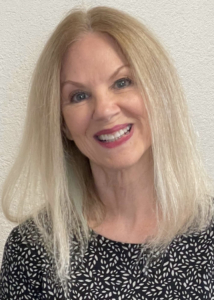Diagnosed at Sixty – My ADHD Journey
My doctor wore the expression of someone with a problem to solve. And he was looking at me.
I froze, a cup of water midway to my mouth. Prior to seeing his furrowed brow and pinched lips, I had no more than mild curiosity about the outcome of the questionnaires I had completed, designed to determine whether or not I had attention deficit hyperactivity disorder, or ADHD. I was sixty years old, held multiple graduate degrees, and had a successful career, working with people with special needs no less. Kids get diagnosed with ADHD, usually after

ADHD by Tara Winstead
driving parents and teachers completely bonkers for years. I only agreed to be tested to make my doctor drop the subject.
“Your tests are very clear, but let me ask you some questions,” he said.
Did I get in trouble for talking in class as a kid? Did I have frequent angry outbursts during my elementary school years? Did I struggle with promiscuity or addiction as a teen? Do I start but not finish things? Do I have a history of interrupting people? Do I get anxious in social groups?
“Does anyone answer ‘No’ to these?” I asked.
I left the office that day with a prescription for Adderall and a fistful of pamphlets.
I didn’t take my medication for the first couple of days after that office visit. I still didn’t believe I had ADHD, a neurodevelopmental disorder people are born with. How could I go sixty years without the diagnosis? I spent hours considering the questions my doctor had asked. As I did, memories surfaced.
“You have such a big mouth!” Mrs. Phillips, my fifth-grade teacher, said loud enough for the whole class to hear. (It was a different time back then. Teachers didn’t have to even pretend to be nice.)
“We do not slap our friends in the face!” Mrs. Garcia yelled at me that summer after my best friend, Chrissie, ran home with my handprint on her cheek.
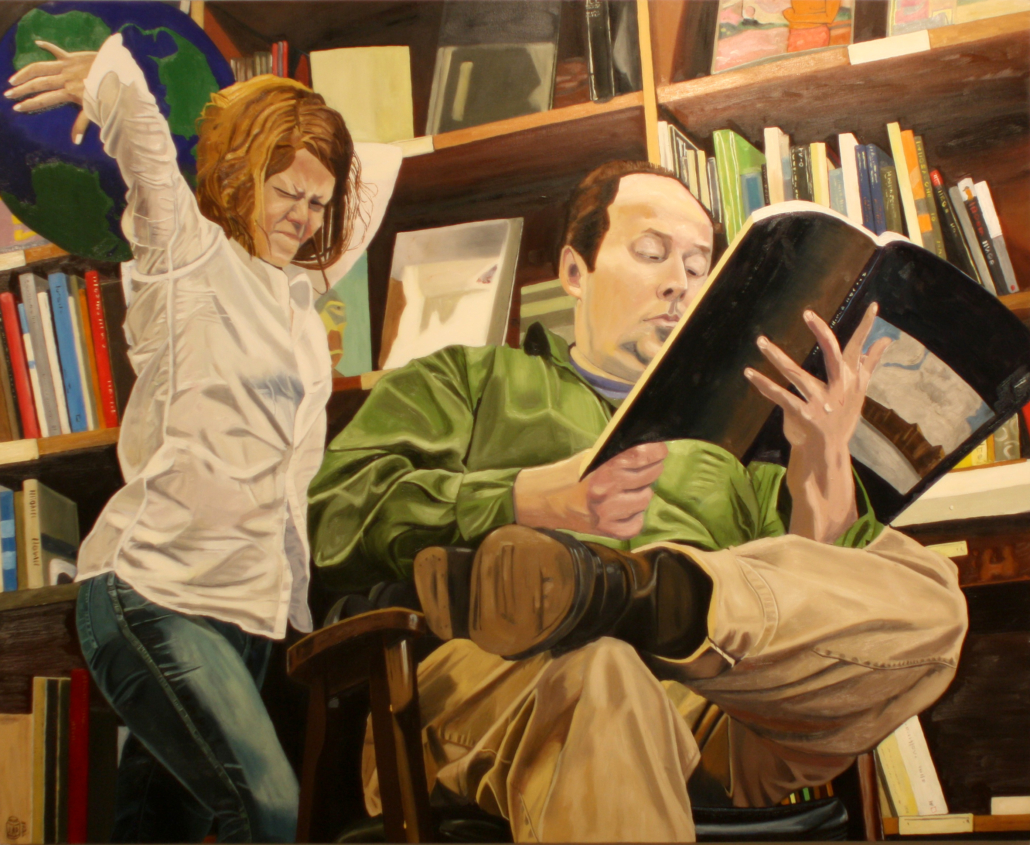
“ArtPrize” by wsilver is marked with CC BY 2.0.
“Do you know why you’ve been sent to see me?” The principal asked when I got summoned in sixth grade. (I had a pretty good idea, but shook my head no because I wasn’t stupid.)
“Ray said you hit him in the head with your lunch box. Is that true?”
It was.
As stories vied for my attention, I tried to convince myself that these were simply the behaviors of a strong-willed kid. I had just needed time to mature. After all, I haven’t slapped anyone in a long time. As I tried to convince myself of this, memories from my many marriages (another sign of ADHD, I would later learn) began streaming across my mental screen like a series of B-movies. Shattering a phone against the wall, breaking a stack of vinyl records in the middle of the street, jumping out of a moving car during an argument—yes, I did all of these things and so much more.
I took my first Adderall at eight o’clock in the morning, two days after the doctor’s visit. And the world slowed down. Or at least my brain did.
Adderall is an amphetamine, an upper, speed. Truth be told, I’ve always loved speed, every kind of it. Who knew I actually needed it?
In the seventies, I took black beauties and dexies, both amphetamines. In the eighties, I did my share of cocaine, but I stopped using it because it put me to sleep. (That should have been a hint, but no one knew about adult ADHD back then). I craved other kinds of speed too. I gunned my car like a drag racer (at least as much as a Ford Pinto would allow) and dated boys who drove motorcycles so fast they had to lay them almost flat to take turns. I talk fast and walk fast, and my plate is always empty before everyone else’s.
Given all this, it’s probably no surprise that since high school people have called me things like “wild” and “crazy.” Eventually, I embraced the labels, thinking of myself as crazy in that free-spirited way. Now I have a new label—neurodivergent. There are times when I’d prefer to go back to nuts, wild, spontaneous, yes, even crazy. But the truth is my brain is different from typical brains. And since my diagnosis, I’ve learned that so many of my pre-prescription behaviors were signs that my gray matter was searching for a dopamine hit. People with ADHD don’t have enough of this feel-good hormone, and speed is one of the many options for boosting it.
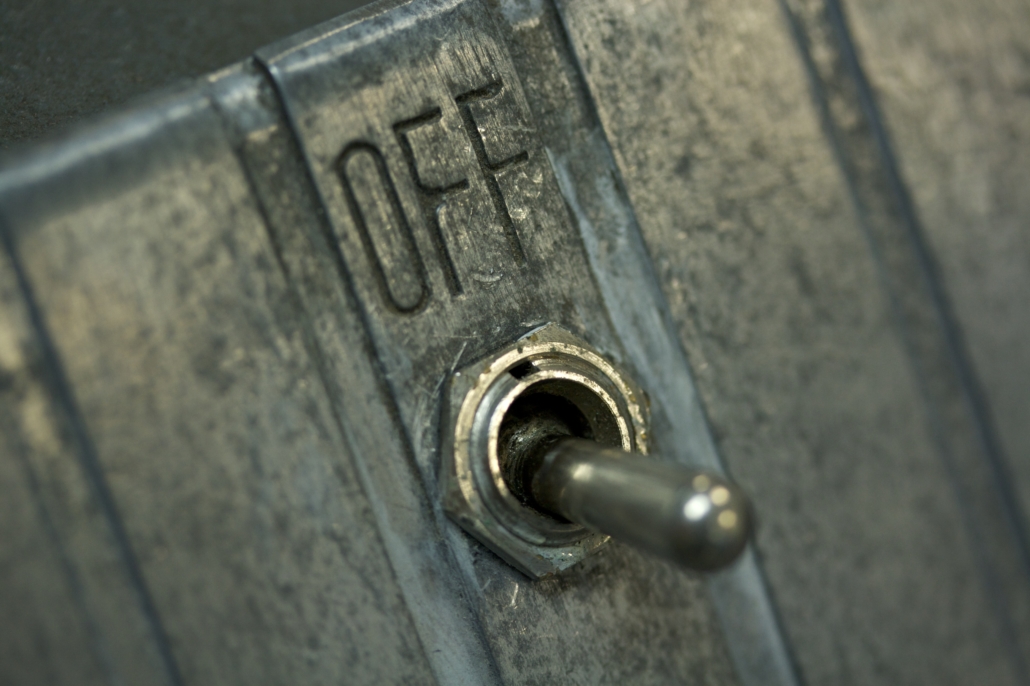
“IBM 26 on/off switch” by Marcin Wichary is marked with CC BY 2.0.
In addition to being impulsive, moving fast, and taking amphetamines as a younger person, the need to score dopamine led to many other troubling and dangerous behaviors. For example, I’ve struggled with disordered eating for most of my life. In general, I lack an off-switch. I’ll eat until food stacks up into my esophagus forcing me to vomit. And woe to the person who tries to get between me and sugar. I’ve made full meals of chocolate cake, Nutter Butters, and ice cream.
I’ve yo-yo balanced my weight over the years with the help of diet pills and credit cards. Once I see the scale tipping my upper limit, I put myself on a starvation diet and head for the mall (virtual or real). Both eating and shopping provide the fix of dopamine my brain needs. And both have done serious damage to my life. I declared bankruptcy when I was in my twenties and have paid so much interest to credit card companies that I could have bought a house or two if I’d saved it.
Scoring dopamine in self-destructive ways isn’t the only downside of untreated ADHD. Some researchers have estimated that by the ripe, old age of ten, children with ADHD receive 20,000 more negative messages than their neurotypical peers. This might seem impossible but think back to elementary school.
Every person remembers that kid, usually a boy but certainly not always, who couldn’t sit still, couldn’t shut up, never completed work, blurted out while others were speaking, got into fights. Remember him? Now picture the teacher’s face. (I see you Mrs. Phillips.) Unfortunately, the displeased expressions, reprimands, and punishments don’t come only from teachers. The face of disapproval followed that kid home and to church and the grocery store, out with his friends, to the dentist’s office, the library, the hair salon, and everywhere else. I know. I was that kid.
All kinds of things happen when that much negativity stalks you. One of the most common responses to a lifetime of being wrong is to develop a deep fear of other people (now known as social phobia). For me, this was a double-whammy because I’m absolutely not an introvert. I go completely wacko if I can’t get out and be with people. But years of eye rolls and worse created such a deep fear of the inevitable social alienation that I drank. And drank. A lot. It didn’t stop the negative judgments from others, but it gave me the courage to show up.
Thinking back to the time of self-medicating conjures some of my most painful memories. I drank way too much to remember full plot lines, but I have a head full of nightmare fragments. The work party where I fell over the back of a sofa, landing on the seat, red stilettos sticking straight up in the air. The dance party where I drank so much in my car in the parking lot that when my first partner led me into a spin, I puked on his chest. A former friend’s wedding when I proudly showed off my navel piercing. Of course, this required that I lift my dress up. How else was everyone supposed to see?
Every drunken experience confirmed to me that I was a loser, and each time I humiliated myself or hurt someone else,
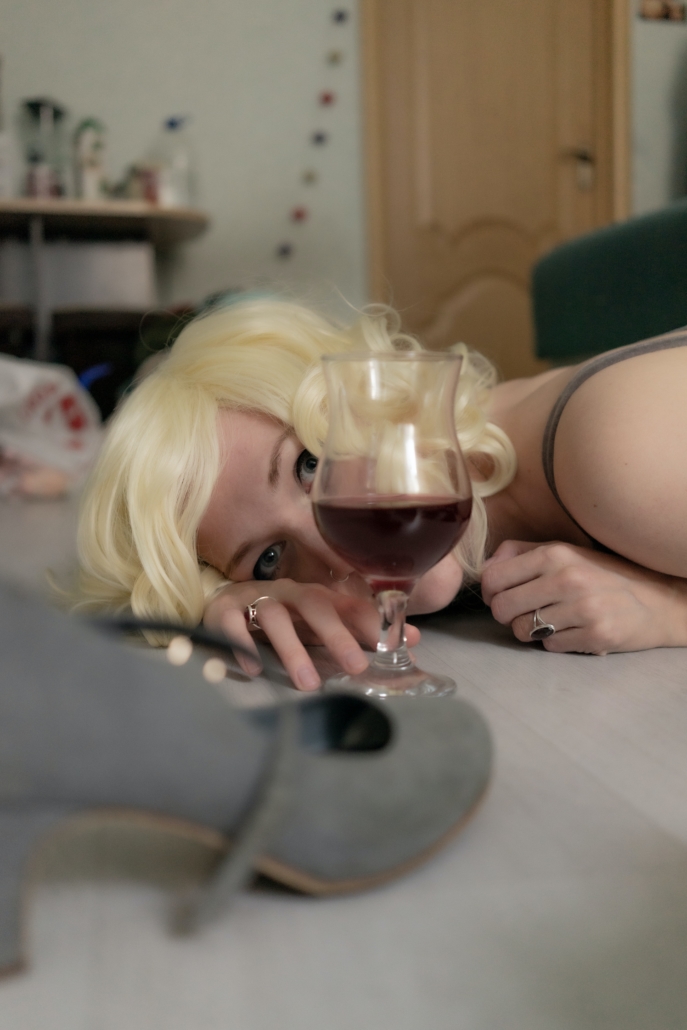
Woman lying on the floor with wineglass, by Darya Sannikova
I would swear off alcohol. But I couldn’t go into groups without it. A couple of shots of vodka provided the fuck-it-buzz I needed to face those critical expressions.
I quit drinking long before the Adderall prescription. It wasn’t difficult. I had never been addicted to the booze, I just needed it to numb the fear of the faces I was sure to see everywhere. I replaced vodka with loneliness, opting out of group events almost completely. I even made excuses to get out of most one-on-one visits with friends. I was tired of trying to fit in. And I was sad.
My diagnosis, not my medication, began to shift how I thought about myself. It didn’t happen overnight. But recognizing that I’m wired differently from other people loosened the straightjacket of shame. I threw myself into ADHD research. I wanted to understand everything I could about my brain.
I learned that people with this condition don’t read social cues well, so they often act in ways other people find odd or inappropriate. We blurt out whatever comes to mind, even when others are talking, because we have impaired executive functioning. We engage in all kinds of risky behavior, sometimes because we just can’t think through the possible consequences, other times because we crave the thrill (aka, dopamine hit). Recent research suggests that we take rejection harder than a typical person would (rejection sensitivity disorder), which in my case, caused profound social phobia. And we self-medicate, self-isolate, and develop low self-esteem.

“Human Brain: Please do not pick up or shake” by Hatchibombotar is marked with CC BY 2.0.
It’s been a few years since my diagnosis. Adderall settles my brain and helps me focus, giving me the relative mental clarity I need to get through my days with less fear that something disastrous will happen. I’ve had some time to review my life, focusing on the many humiliations, crazy choices, and dangerous behaviors, and I’ve been able to forgive myself to some extent. But my healing isn’t complete, and I don’t think it ever will be.
I wonder if people might have been kinder if they’d known I actually was doing my best. I try to imagine Mrs. Phillips gently explaining to fifth-grade me that I should let other people finish talking before taking my turn. She smiles and nods in reassurance. I apologize, and she gives me a thumbs-up. I beam with pride and bask in the warm glow of acceptance. Right? Probably not.
I’ve worked in special education for years, and I see the challenges kids with ADHD and other neurodevelopmental disorders face. It’s better now, absolutely. For one thing, today’s students are protected by law, and schools are required to provide certain accommodations in general education classrooms. But laws don’t dictate people’s faces and tones of voice. In spite of the steps forward we’ve taken, neurodivergent kids are still expected to contort themselves to fit into molds that weren’t made for them. Standards based on neurotypicality still define success. And “disruptive” behavior still gets punished.
In some ways, it’s worse for all of us diagnosed as adults. Most people never consider that an adult has ADHD. And we didn’t grow up being taught to ask for the accommodations we need. It’s even worse for women, who tend to present differently than their male counterparts, and for senior adults, who get mislabeled as displaying signs of cognitive decline. We still have a long way to go in accommodating neurodivergence.
I can be still for a little while, sometimes it’s five minutes, other times twenty. It isn’t a question of will. My brain can scream at my body to settle down, but it’s as if each of my limbs has a little mind of its own. I twist this way and that, move an arm here then there, cross my left leg over my right then switch, move my purse from my lap to my seat to the floor to my lap. I can’t stop. But when I’ve explained my need to sit on the periphery to restaurant staff, conference organizers, etc., I’m usually met with something like “We’ll do our best, but we’re a full house.” It takes everything I’ve got not to slap them. (Remember Chrissie’s face?)
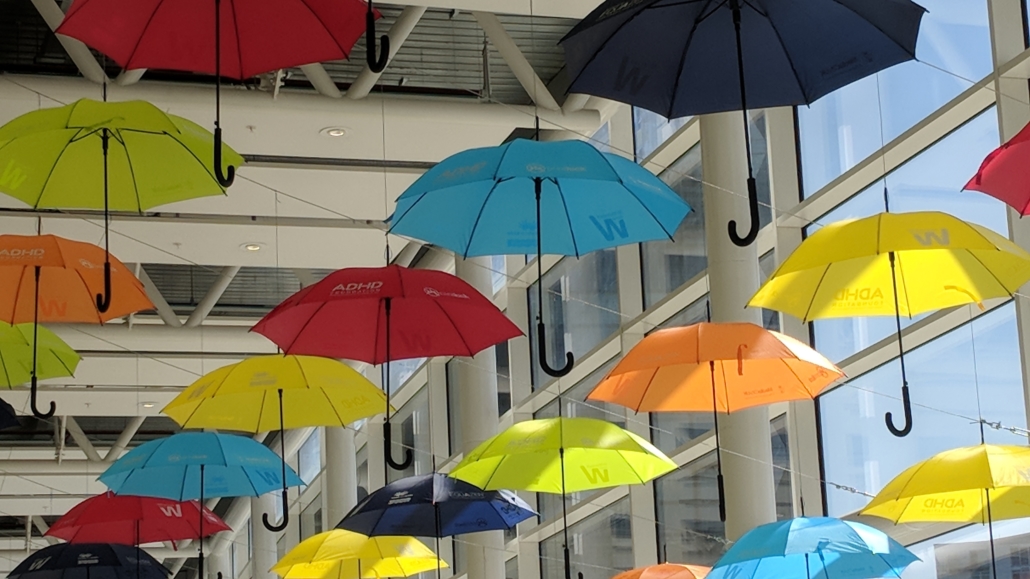
“ADHD Umbrella Project 2018 Neurodiversity Autism” by printkick is marked with CC BY 2.0.
While things aren’t perfect, having the diagnosis helps. The medication helps. Perhaps most importantly, understanding my brain has propelled me back into the world because I’m committed to being as public as I can be about having ADHD. I hope adults who recognize something in my story will get assessed. A diagnostic label won’t get us back the years of struggling to fit in, and it won’t make everyone accept our differences now. Let’s face it, there will always be the Mrs. Phillipses of the world. But the diagnosis does shift how we perceive ourselves. And that’s worth so much.
Kait Leonard holds graduate degrees in literature and psychology and is currently working on her MFA at Antioch University. Her recent fiction has appeared in Flash Fiction Magazine, Every Day Fiction, The Moving Force Journal, and Six Sentences. Her flash story, “Just a Girl,” won 3rd place in Flash Fiction Magazine‘s Fall 2021 contest. Her nonfiction can be found in Seniors Guide, Today’s Caregiver, and monthly in The Canyon Chronicle, a community newspaper serving parts of Los Angeles County. She shares her home with five parrots who regularly make her bleed, and her American bulldog, Seeger.

